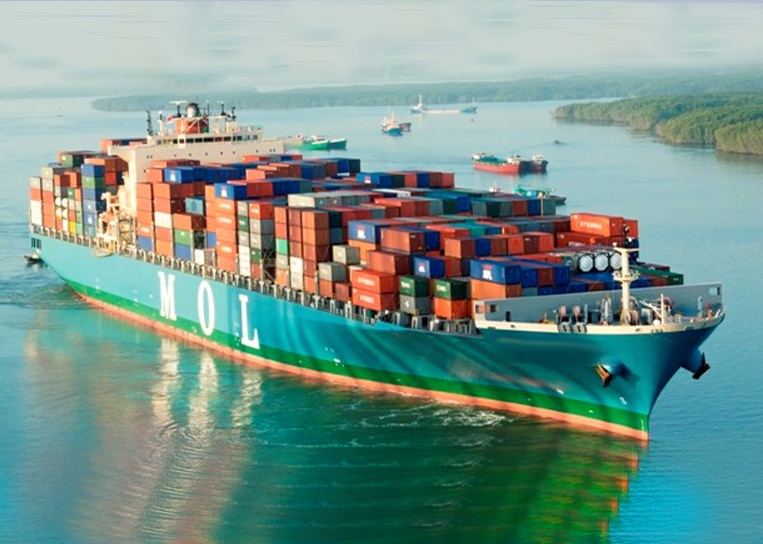Japan’s Mitsui OSK Lines (MOL) has started demonstration tests of a new windshield for containerships, potentially reducing wind resistance, saving fuel and lowering carbon dioxide emissions.
The new technology was jointly developed by MOL with MOL Techno-Trade, Ouchi Ocean Consultant, Akishima Laboratory, and University of Tokyo.

The new windshield was installed on the bow of the 6,700-teu containership MOL Marvel, and a demonstration test of its effectiveness in reducing CO2 emissions is underway.
The MOL Marvel installed with the windshield is expected to achieve an annual CO2 reduction of 2%, assuming the ship is plying the North Pacific Ocean route at a speed of 17 knots.
The windshield is also expected to protect the ships from green water on the bow deck when sailing in bad weather.
“With today’s larger containerships, the height of the containers loaded on their decks has increased, subjecting the vessels to greater wind resistance. MOL recognized the need to address this issue in a cost-effective way,” MOL stated.
Development of the new device began with an examination of the bow’s aerodynamic form through wind tunnel testing. This led to the adoption of a horseshoe-shaped design, which encloses the front line of the stacked containers to maximize the wind resistance-reducing effect while minimizing the weight of the main unit.
The new windshield has enough design strength to meet the ClassNK rules concerning wave impact pressure. In addition, by obliquely setting the containers placed along the sides of the vessel behind the windshield, the sides of the vessel will be more streamlined, further reducing wind resistance.
Truong Duy
